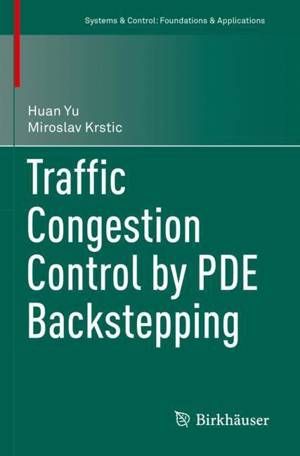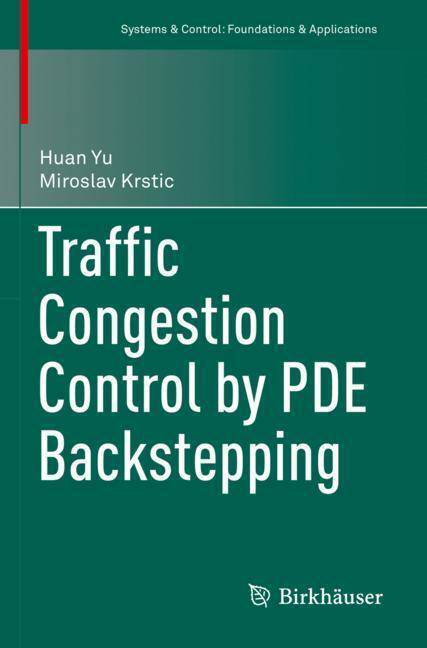
- Afhalen na 1 uur in een winkel met voorraad
- Gratis thuislevering in België vanaf € 30
- Ruim aanbod met 7 miljoen producten
- Afhalen na 1 uur in een winkel met voorraad
- Gratis thuislevering in België vanaf € 30
- Ruim aanbod met 7 miljoen producten
Zoeken
€ 244,45
+ 488 punten
Uitvoering
Omschrijving
This monograph explores the design of controllers that suppress oscillations and instabilities in congested traffic flow using PDE backstepping methods. The first part of the text is concerned with basic backstepping control of freeway traffic using the Aw-Rascle-Zhang (ARZ) second-order PDE model. It begins by illustrating a basic control problem - suppressing traffic with stop-and-go oscillations downstream of ramp metering - before turning to the more challenging case for traffic upstream of ramp metering. The authors demonstrate how to design state observers for the purpose of stabilization using output-feedback control. Experimental traffic data are then used to calibrate the ARZ model and validate the boundary observer design. Because large uncertainties may arise in traffic models, adaptive control and reinforcement learning methods are also explored in detail.
Part II then extends the conventional ARZ model utilized until this point in orderto address more complex traffic conditions: multi-lane traffic, multi-class traffic, networks of freeway segments, and driver use of routing apps. The final chapters demonstrate the use of the Lighthill-Whitham-Richards (LWR) first-order PDE model to regulate congestion in traffic flows and to optimize flow through a bottleneck. In order to make the text self-contained, an introduction to the PDE backstepping method for systems of coupled first-order hyperbolic PDEs is included.
Traffic Congestion Control by PDE Backstepping is ideal for control theorists working on control of systems modeled by PDEs and for traffic engineers and applied scientists working on unsteady traffic flows. It will also be a valuable resource for researchers interested in boundary control of coupled systems of first-order hyperbolic PDEs.
Part II then extends the conventional ARZ model utilized until this point in orderto address more complex traffic conditions: multi-lane traffic, multi-class traffic, networks of freeway segments, and driver use of routing apps. The final chapters demonstrate the use of the Lighthill-Whitham-Richards (LWR) first-order PDE model to regulate congestion in traffic flows and to optimize flow through a bottleneck. In order to make the text self-contained, an introduction to the PDE backstepping method for systems of coupled first-order hyperbolic PDEs is included.
Traffic Congestion Control by PDE Backstepping is ideal for control theorists working on control of systems modeled by PDEs and for traffic engineers and applied scientists working on unsteady traffic flows. It will also be a valuable resource for researchers interested in boundary control of coupled systems of first-order hyperbolic PDEs.
Specificaties
Betrokkenen
- Auteur(s):
- Uitgeverij:
Inhoud
- Aantal bladzijden:
- 356
- Taal:
- Engels
- Reeks:
Eigenschappen
- Productcode (EAN):
- 9783031193484
- Verschijningsdatum:
- 18/12/2023
- Uitvoering:
- Paperback
- Formaat:
- Trade paperback (VS)
- Afmetingen:
- 156 mm x 234 mm
- Gewicht:
- 526 g

Alleen bij Standaard Boekhandel
+ 488 punten op je klantenkaart van Standaard Boekhandel
Beoordelingen
We publiceren alleen reviews die voldoen aan de voorwaarden voor reviews. Bekijk onze voorwaarden voor reviews.








